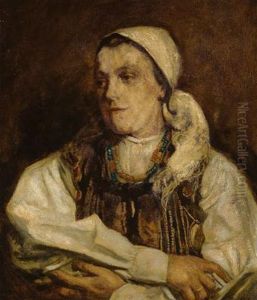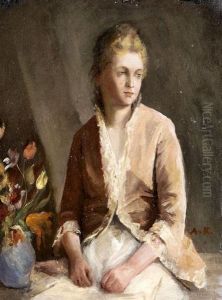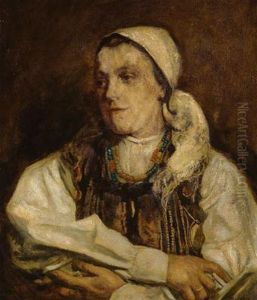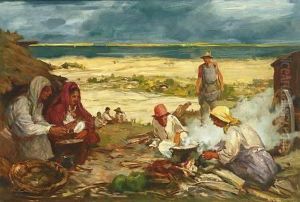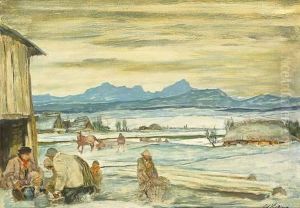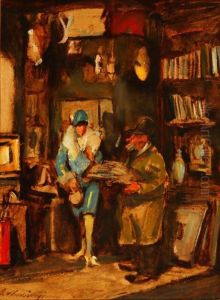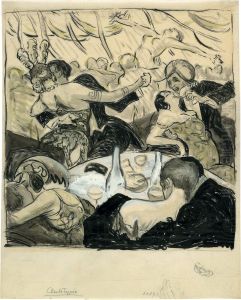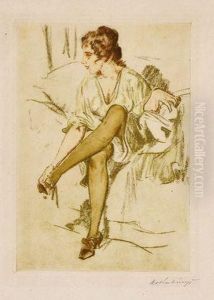Sandor Alexander Kubinyi Von Demenfalva Paintings
Sandor Alexander Kubinyi von Demenfalva, born in 1899, was a Hungarian-American artist and illustrator, whose life and career spanned a period of significant historical and artistic change. Though detailed information about his death is scarce and thus his date of death remains unknown, Kubinyi's contributions to the art world, particularly in the realm of printmaking and illustration, have been recognized by art historians and collectors alike.
Kubinyi was part of the vibrant early 20th-century art scene that was heavily influenced by shifts in cultural, social, and political landscapes. His work, which often explored themes of nature, humanity, and the complexities of the human condition, was reflective of the broader artistic movements of the time, including Expressionism and the burgeoning Modernist movement. Kubinyi was particularly known for his skill in etching, a form of printmaking that allowed him to express intricate details and rich textures, imbuing his subjects with a sense of depth and emotion.
Throughout his career, Kubinyi was involved in several art organizations and played a significant role in promoting the arts within the United States. He was a member of the Cleveland Print Makers and contributed to the Federal Art Project, a part of the Works Progress Administration (WPA) during the Great Depression. This involvement not only highlights his dedication to the arts but also positions him within a critical moment in American history when artists were employed to uplift the national spirit during times of economic hardship.
Despite the challenges of tracing Kubinyi's full biography and the specifics of his later years, his artistic legacy continues to be appreciated. His works can be found in various collections and have been exhibited in numerous galleries, reflecting the enduring relevance of his artistic vision. Kubinyi's life story, from his early years in Hungary to his contributions to the American art scene, represents the journey of an artist deeply engaged with the tumultuous changes of the early 20th century and committed to exploring the potential of art to capture the human experience.
